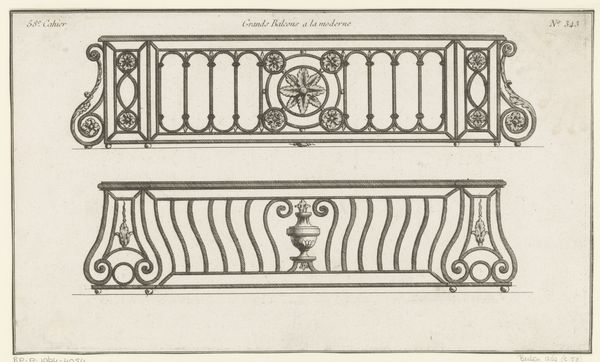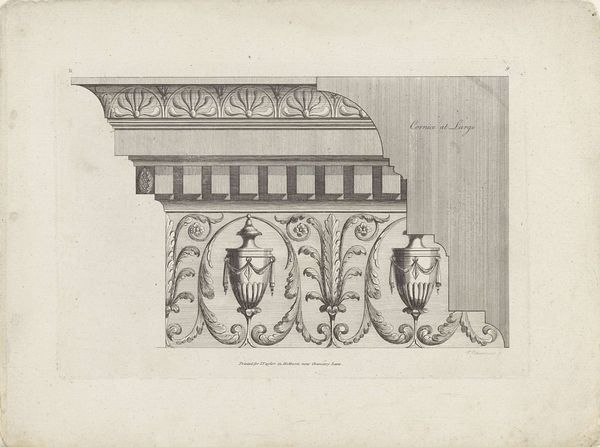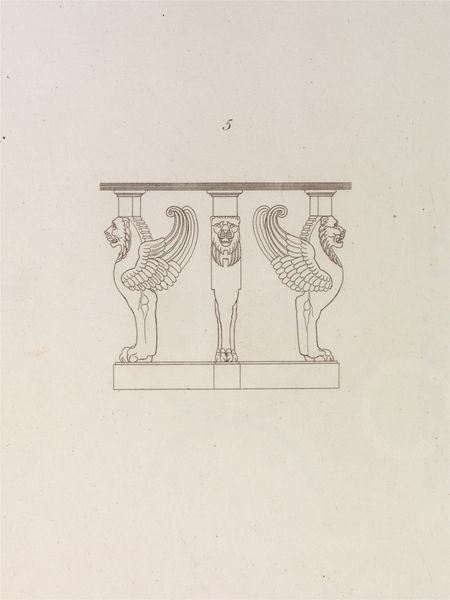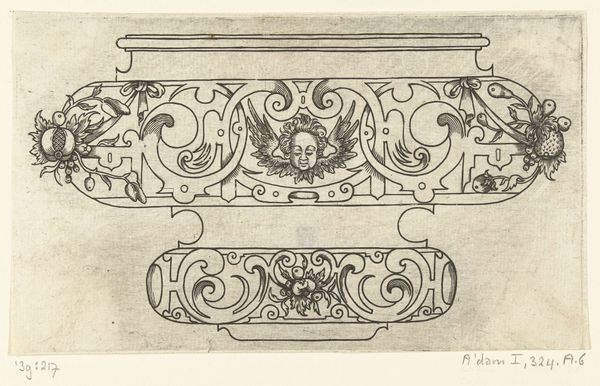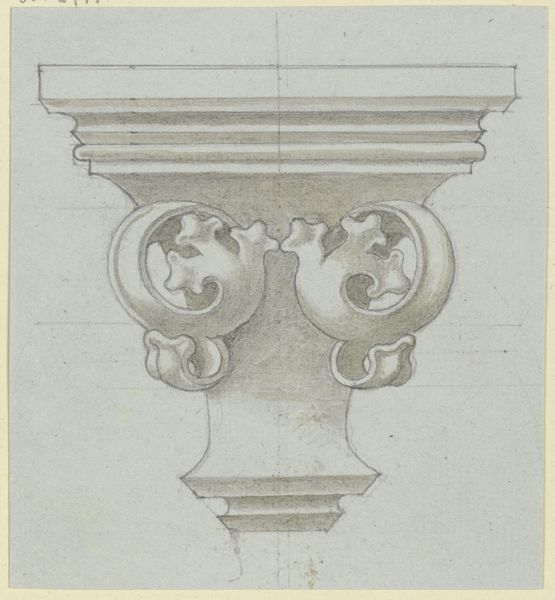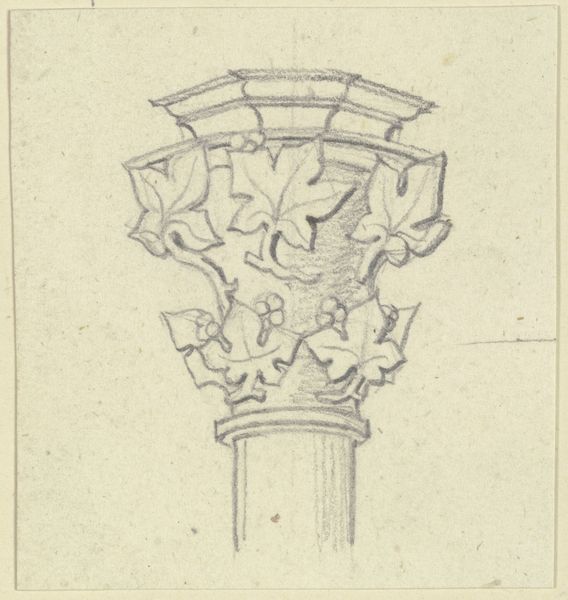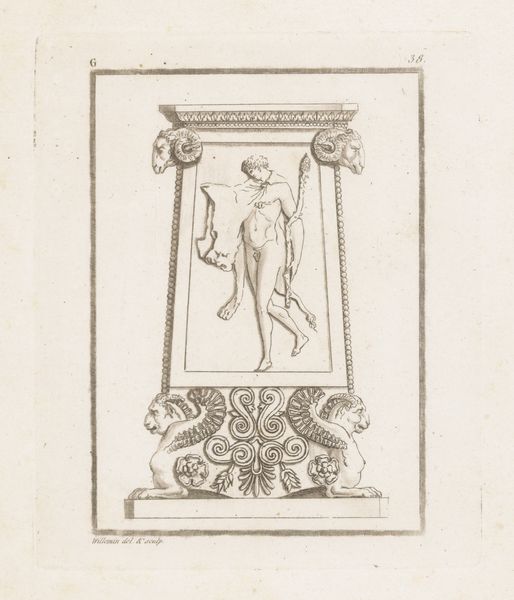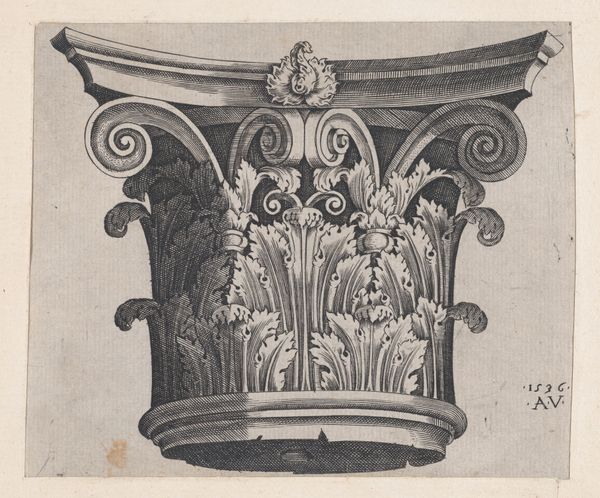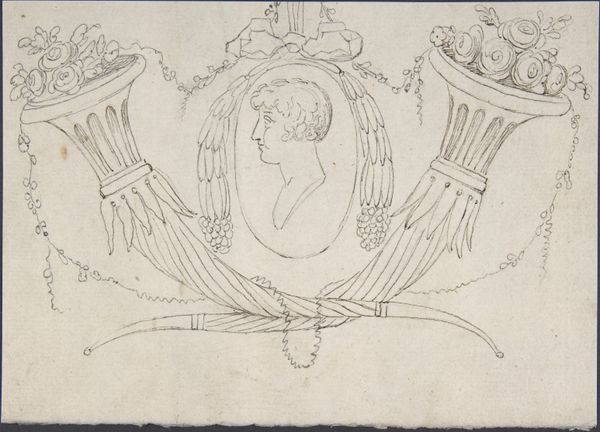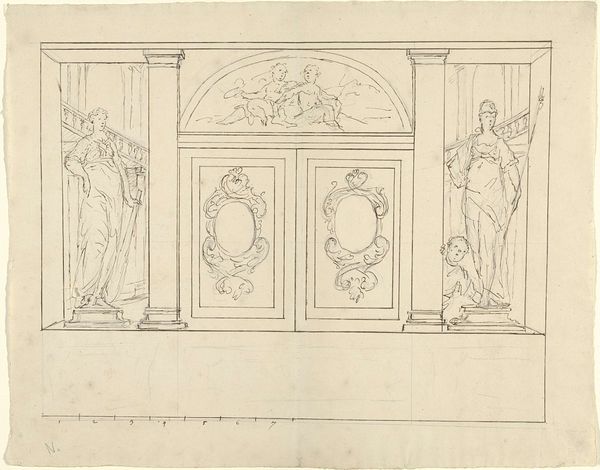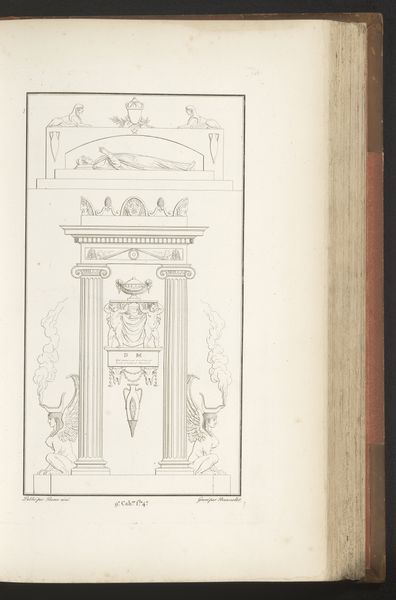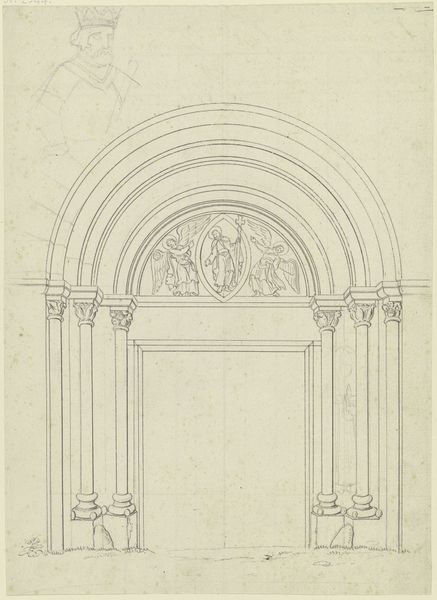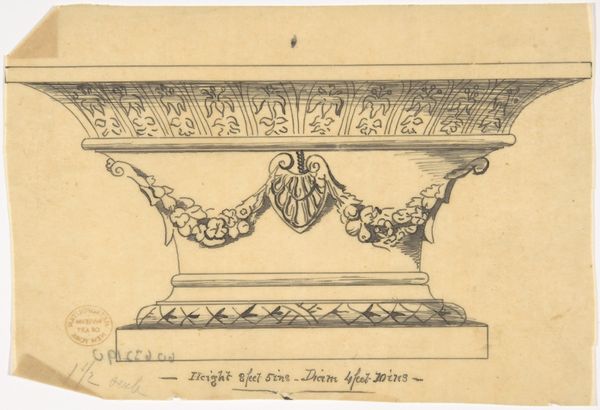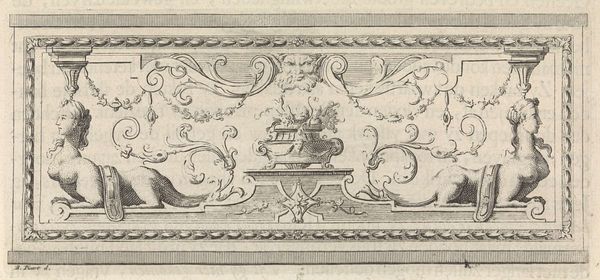
drawing, paper, ink, architecture
#
drawing
#
paper
#
form
#
ink
#
geometric
#
ancient-mediterranean
#
line
#
architecture
Copyright: Public Domain
This drawing of a Roman capital by Karl Ballenberger presents us with a fascinating blend of classical motifs and symbolic imagery. The acanthus leaves at the base, a hallmark of classical architecture, evoke notions of growth, life, and perhaps even immortality. But it's the winged figures that truly capture our attention. These beings remind us of similar figures that bridge the earthly and divine realms in ancient mythologies. Think of the winged deities of Mesopotamia, or the Greek Nike. Here, however, they adorn a Roman capital, suggesting a fusion of cultural and religious ideas. The grotesque mask at the center, with its primal features, stands in stark contrast to the serene faces of the other figures. This jarring juxtaposition might evoke a sense of the uncanny, reminding us of the darker, more chaotic aspects of the human psyche. It's as if the artist is tapping into a collective memory, stirring up emotions and associations that lie deep within our subconscious. These motifs resonate across time and space. The capital is not merely a decorative element but a potent carrier of cultural memory, revealing the continuous, cyclical progression of symbols.
Comments
No comments
Be the first to comment and join the conversation on the ultimate creative platform.
